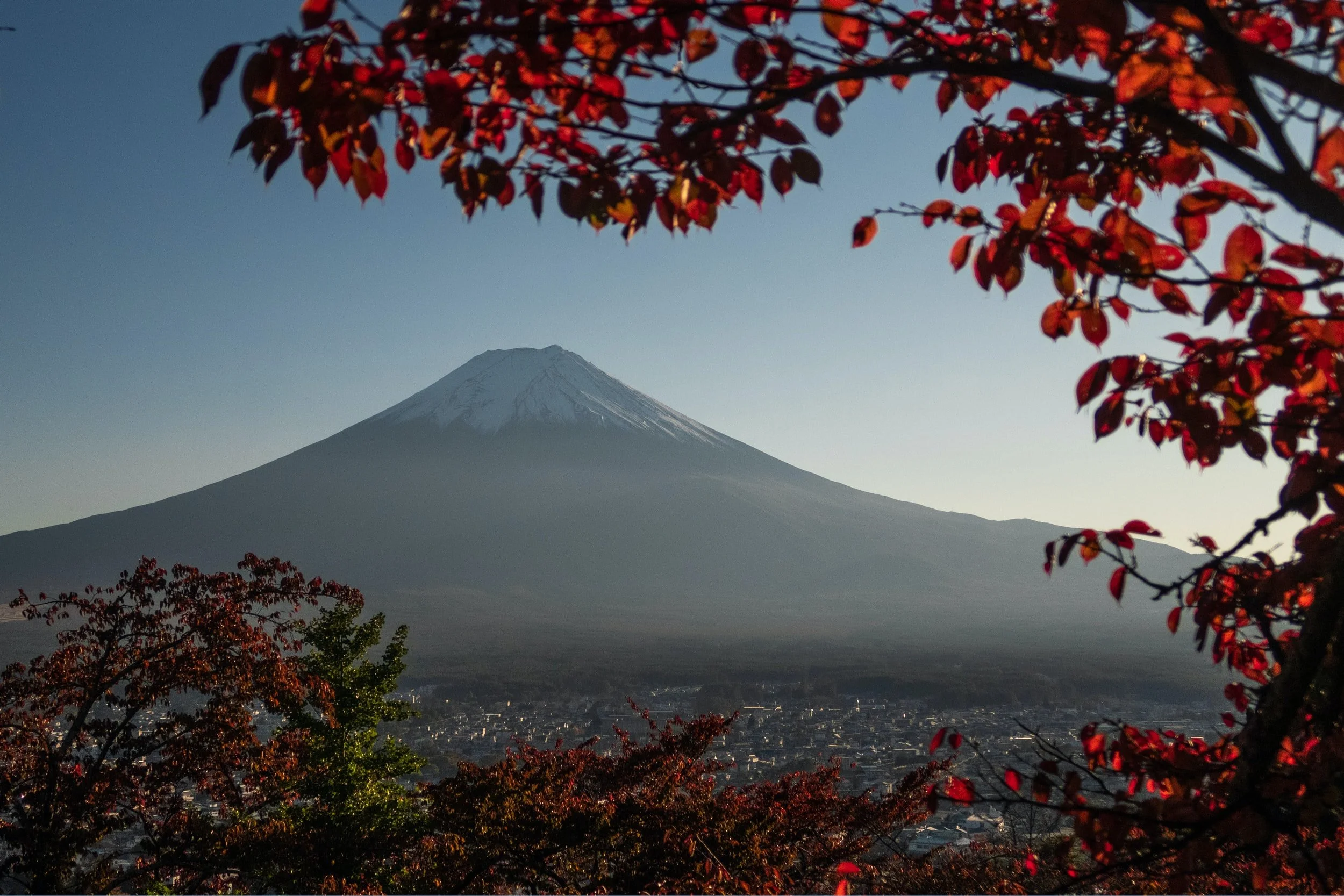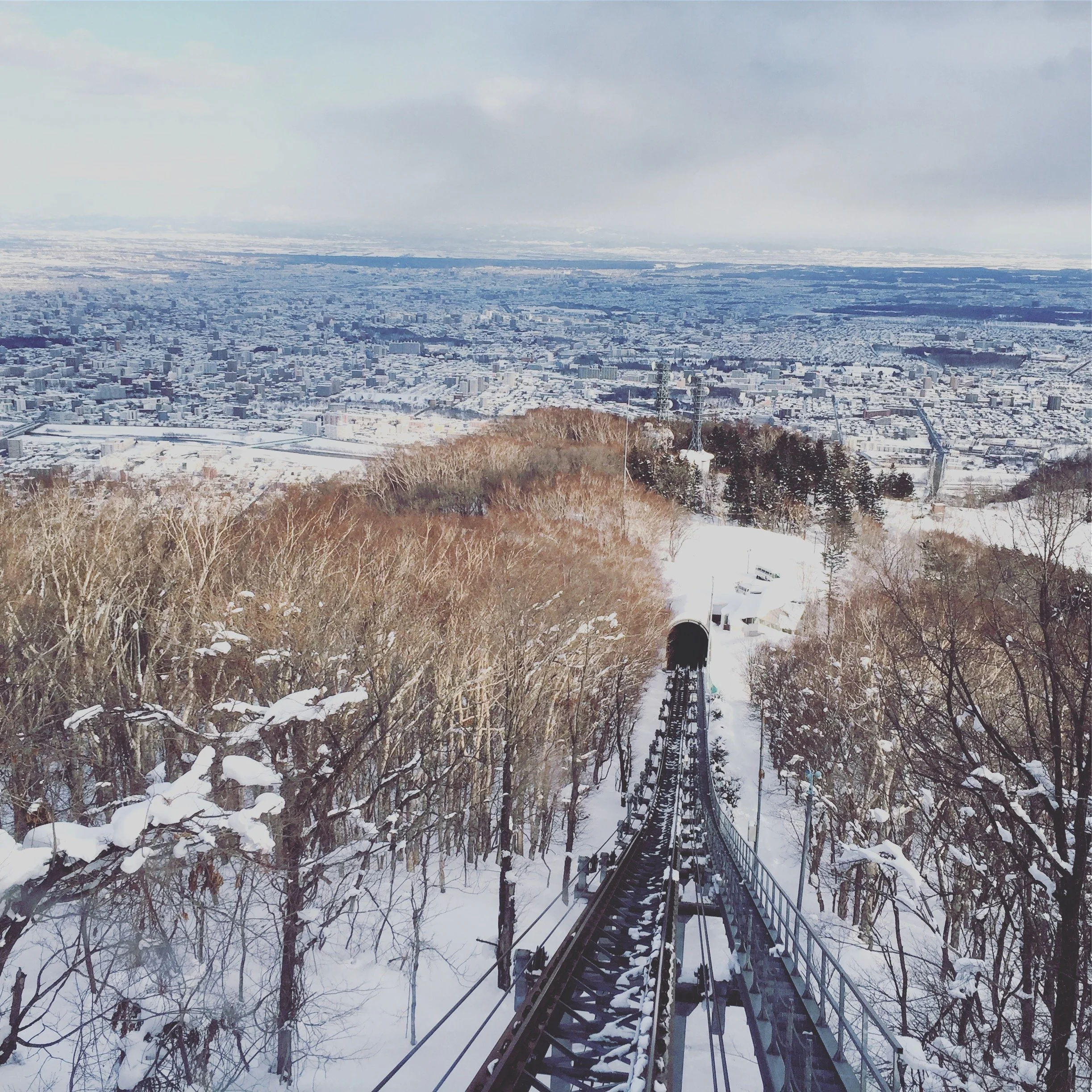THURSTQUEEN WORLD TOUR: JAPAN
One of the most exciting, underrepresented regions in the world right now is Japan — especially for folks who love natural wine.
For many people, wine is not the first thing that comes to mind when the country Japan is mentioned. Sake, whiskey and beer perhaps, but Japan’s wine scene has received relatively little attention within the United States.
Japanese Wines have been creeping on the up and up, and several prominent wineries are starting to win awards in International Wine Competitions
Sure, there are plenty of wines that skew on the sweeter side, but a lot of Japanese wines are light and crisp. There’s a very strong emphasis on purity, and letting Japanese terroir show through. The wines tend to be on the lighter end of the spectrum and pair well with local cuisine like Sushi and noodle-based dishes.
THE HISTORY OF JAPANESE WINE
If you were to search for an article referencing when winemaking in Japan started, a lot would probably say that Japanese winemaking started 150 years ago, and was influenced by the Europeans.
This is incorrect, as folks in Japan were fermenting grapes long before any encounters with the West. Grape growing was happening as early as 718 AD in Katsunama. And Japanese vintners in the area created a fermented grape beverage was called, “budoshu” which translates to “grape alcohol.” In the 16th Century, Jesuit Missionaries arrived and brought vineyard plantings from Portugal to Japanese Feudal Lords.
The first private commercial winery was called Château Mercian, and it was founded in 1877 - a mere couple of decades after the famous 1855 Classification in Bordeaux. Since then, Japanese wines have won plenty of recognition from International Wine Competitions, and folks from esteemed Bordeaux Estates like Châteaux Margaux have consulted with some of the properties in Japan. Japanese wine regions are called GIs, which stand for Geographical Indication.
As of now, Japan has about 300 working wineries in all its GIs. And its future sure does look exciting for the country’s wine scene! Let’s chat briefly about the most popular Japanese wine grapes, Japan’s signature wine producing GIs you’ll encounter, and what kinds of wines to look for from each one.
SIGNATURE JAPANESE WINE GRAPES
Japan is known for a couple unique varietals, and be sure to keep a lookout for them when you’re on your travels or if you’re looking to purchase a truly authentic tasting Japanese wine. In Japan you will see a lot of heartier species of grapes called Hybrids, which is largely due to the relatively humid and cooler climate in the region. Hybrid grapes are crossbreeds of vitis vinifera rootstock with other types of rootstock, like vitis labrusca and many more. I’ll definitely be doing an article on hybrids, so stay tuned for more.
KOSHU - JAPAN’S STAR WHITE GRAPE
A pink-skinned grape, Sancerre and Saumur Blanc fans will go nuts for Koshu. This Japanese grape was brought to the region from the Caucasus about 1,000 years ago. Koshu was initially a table grape used for eating, eventually was used in winemaking.
Koshu is a hybrid grape which means it is a cross breed of vitis vinifera and an Asian vitis species. Because of this, it’s much more resilient to Japan’s humid climate.
Some Koshu wines are sweetened, but dry Koshu tends to taste like citrus, more specifically Japanese Yuzu fruit. The grape produces a wine that is low in alcohol and usually clocks in at around 11 - 12% ABV. Because it’s so light and elegant, it’s the perfect wine to pair with sushi (of course) and other raw seafood dishes.
MUSCAT BAILEY A - JAPAN’S POPULAR RED GRAPE
Muscat Bailey A is another hybrid grape that is commonly used to make light, fruity red wines. Beaujolais and Blaufrankisch-lovers will probably vibe hardcore with this 100 year old varietal. Muscat Bailey A was bred in the 1920s by Kawakami Zenbei, who was known as the “Grandfather of Japanese Wine.” The grape is a hybrid of Muscat Hamberg and Labrusca Bailey.
A lot of Zenbei’s vineyards experienced very snowy winters, and the majority of his vines could not survive there. His answer was breeding a cold weather resistant grape, and that is how Muscat Bailey A came into existence.
Muscat Bailey A has very thick skins, and has a sort of cotton candy vibe in terms of aroma profiles. Schiava-lovers will definitely be all about Muscat Bailey A. It’s a ripe, fresh, fruity Summer wine that would be great with a nice chill without a doubt.
BLACK QUEEN - ANOTHER POPULAR JAPANESE HYBRID VARIETAL
Besides having the coolest name around, Black Queen is a very popular hybrid of Muscat Bailey A and Golden Queen - a table grape. Black Queen is often blended with Bailey A. From what I can gather, it similar to Muscat Bailey A, in terms of fruitiness and lighter body. As the Black Queen varietal matures, it gives off cocoa aromas.
MAJOR WINE REGIONS (GIs) OF JAPAN
JAPANESE GI NUMBER 1: YAMANASHI
Yamanashi is Japan’s largest and most famous wine producing region, and approximately 30% of all Japanese wine comes from this part of the country. Yamanashi is sheltered by Mt. Fuji, and enjoys long hours of sunshine and very little rain. Vineyards in Yamanashi look a bit different; instead of seeing rolling hills covered in swaths of vines, you’ll probably see neighborhoods planted with orchards intermingled smaller family-owned vineyards.
37,000 bottles of wine are exported internationally from this region, and there are 87 commercial wineries here. The most common grape varietals in Yamanashi are Koshu, Muscat Bailey A, and Chardonnay and Merlot.
JAPANESE GI NUMBER 2: HOKKAIDO
Hokkaido is one of the newer wine regions in Japan. Recently, folks have been able to start producing wine here due to climate change. Hokkaido has extreme temperature fluctuations and relatively low humidity, making it ideal for cultivating grapes like Kerner, Muller Thurgau, Pinot Noir and Zweigelt.
The cold and snowy weather here provides a lot of opportunity for cultivating hybrid varietals, and sometimes the vineyards have to be covered with earth in the autumn to protect the vines from freezing over.
A lot of folks compare Hokkaido’s cooler climate vineyards to some of the vineyards in the Alsace and Champagne, and Hokkaido’s star is definitely on the rise as the heart and soul of Japanese Wine Country.
JAPANESE GI NUMBER 3: NAGANO
Nagano is Japan’s up-and-coming wine region. Nagano rises over 3,000 meters above sea level, and that high elevation makes it the perfect spot for cultivating international varietals like Cabernet Sauvignon, Chardonnay and Merlot. Other grapes grow here like Concord and Niagara - both of the Vitis Labrusca species.
Nagano has 4 smaller subregions called the Nihon Alps, Chikumagawa Wine Valley, Kokyogahara Wine Valley, and the Tenryugawa Wine Valley. Together, these sub appellations are called the Shinshu Wine Valley.
JAPANESE GI NUMBER 4: YAMAGATA
Yamagata is located in the Honshu Island facing the Sea of Japan. It is extremely snowy here, and has long hot humid Summers. One might argue cultivating wine here is next to impossible - but just say that to the 15 wineries in this prefecture and they’ll be sure to tell you otherwise!
Because of the humidity and cooler climate, hybrid varietals do fairly well in this area. Yama Sauvignon, a red varietal that is a cross breed of Cabernet Sauvignon and local Japanese varietal, Yamabudo. Other hybrids like Seibil 13053 are also allowed to grow in Japan.
PICK OF THE WEEK: Château Mercian Muscat Bailey A $38.00 @ Takasan
This wine gifted to me by a friend of mine for my 31st Birthday, and I’m so glad she picked up a bottle!
Japanese wine is very hard to come by state side, and the Château Mercian is quite possibly one of the most interesting wines I’ve ever tasted. It’s definitely different from a lot of the wines I typically drink, but the technique is there and it is executed well.
I think what threw me off a bit about it was the fact that the nose suggests something very different from what you get on the palate. I’ve never had Muscat Bailey A before - or any other hybrids, or Japanese wines for that matter but I was impressed, and found this wine surprising.
The Château Mercian has aromas of bubblegum and cotton candy when you first pour it into the glass. Now, I’m not talking like, mild candy aromas, the wine literally SCREAMS candy. It reminds me of the Pink Sugar perfume at Sephora that was wildly popular in the 2010s. I think the nose was my favorite part about it in all honesty, as it’s a very aromatic wine.
On the palate, the Muscat Bailey A from Château Mercian wine races with acidity, and has some bitter tannins as well. It’s got the lightness of your favorite Beaujolais - which is why I recommend serving it chilled - but has some savory, herbal characteristics as well. This wine is super tart and lemony, like taking a bite out of the tartest cranberries. There’s a little bit of animalistic funk going on as well.
As far as pairings go, I’d recommend the whole, “What grows together, goes together,” philosophy. I would consider pairing this wine with any miso-based dishes, and playing up some of the wine’s more savory umami elements. A bowl of ramen would be great with this, as would a California or Rainbow roll. This wine would definitely be something I’d pick if I were eating sushi.








